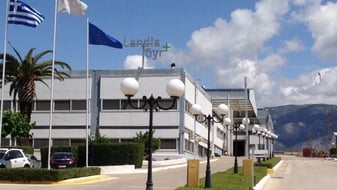 Advanced energy storage systems are currently emerging as assets with potential for both network and generation applications within the grid network.
Advanced energy storage systems are currently emerging as assets with potential for both network and generation applications within the grid network.
Toshiba has recently developed a high power Battery Energy Storage System (BESS) for grid power quality and renewable energy power plant applications. The system, with 4MW of nominal power and 1MWh of energy capacity, will be installed in Italy in November 2014 on a wind farm of one of the major international Independent Power Producers Enel Green Power s.p.a..
When integrated with the wind farm and connected to the grid network the BESS will smooth the intermittent power generated and make the renewable energy resource predictable. To achieve this, the system receives an hourly power schedule from the independent power producer’s main controller and, using the energy stored in the batteries, compensates for the gap between the power set point and the wind farm’s current generation.
The advanced energy storage system’s controls ensure that power is injected into the grid within the desired range, taking into account the current status of the BESS, such as temperature of battery modules, the state of charge (SOC), charge/discharge rate, the characteristics of the inverters and the status of the grid. The effectiveness of the control strategy has been tested by using historic data from a wind farm.
The BESS is designed to achieve a performance of 4C. C-rate is an important battery metric, measuring the capability of the battery module as a ratio between power and energy. For example, a 1kWh module can be charged/discharged at 4kW in 15’.
This performance is obtained thanks to Toshiba’s Super Charge ion Batteries (SCiB), which use lithium-titanate chemistry. The SCiB Lithium-Titanate technology provides a long life – over 10000 charge/discharge cycles – and performs safely even at temperatures as low as -30°. The batteries yield a high amount of usable energy over a wide range of SOC and also allow fast recharging, in approximately six minutes.






